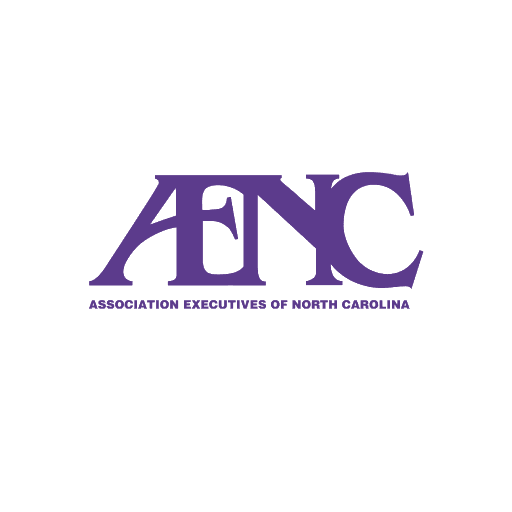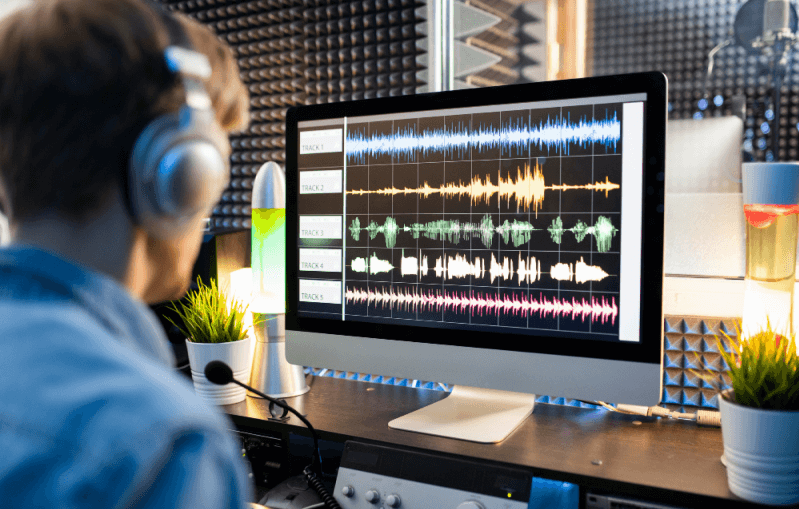Complete manual on selecting audio visual charlotte nc
Wiki Article
Recognizing the Incorporation of Audio Visual Modern technology in Today's Educational Environments
The integration of audio-visual innovation in academic setups has actually transformed the training and learning procedure. Educators now have access to tools that cater to different learning designs, boosting student interaction and cooperation. The unification of these modern technologies provides both opportunities and difficulties. Comprehending exactly how to efficiently implement these tools is essential. What approaches can teachers utilize to maximize the benefits of audio-visual modern technology in their class?The Development of Audio-Visual Technology in Education And Learning
As educational demands developed over the decades, audio-visual innovation undertook significant changes that improved the understanding setting. Devices such as film projectors and slide shows were the primary ways of integrating visual aspects into class. These early innovations given teachers with the ability to existing details dynamically, yet they were restricted in availability and interactivity.With the development of videotape recorder in the 1970s, class began to include taped lessons, widening the extent of academic sources. The introduction of personal computers in the 1980s further reinvented this landscape, permitting the creation of multimedia presentations and interactive discovering experiences.
The increase of the web in the 1990s marked a pivotal moment, making it possible for real-time access to a riches of audio-visual products. Today, digital tools such as interactive whiteboards and on-line learning systems remain to enhance the academic experience, promoting engagement and cooperation amongst learners.
Benefits of Audio-Visual Tools for Diverse Knowing Styles
Audio-visual devices play a necessary duty in satisfying diverse learning styles by boosting visual learning and enhancing acoustic interaction. By integrating images, videos, and audio, these technologies create an even more inclusive academic setting. This complex technique enables educators to address the diverse choices and requirements of trainees effectively.Enhancing Visual Knowing
Engagement in the learning procedure is markedly improved through making use of audio-visual tools, dealing with different learning designs. These tools, such as video clips, infographics, and interactive discussions, offer visual stimuli that aid understanding and retention. Visual students, in specific, advantage from the unification of photos and animations, which can streamline intricate ideas and boost understanding. In addition, audio-visual sources can show real-world applications, making discovering more relevant and interesting. By integrating color, motion, and audio, teachers can develop a dynamic understanding setting that captures trainees' focus and fosters much deeper cognitive links. Ultimately, the tactical use audio-visual innovation not just sustains visual understanding but additionally improves the general academic experience for varied students.Improving Auditory Engagement
A substantial advantage of including audio-visual devices in education is their capability to enhance acoustic interaction among trainees. These tools, which include multimedia discussions, podcasts, and interactive sound components, accommodate different discovering styles, specifically benefiting acoustic learners (audio visual charlotte nc). By incorporating sound and narration, educators can produce immersive experiences that record pupils' focus and strengthen understanding. This engagement is vital, as it cultivates a deeper understanding of the material and promotes retention. In addition, audio-visual tools can assist in collaborative learning settings, encouraging pupils to participate in conversations and share their insights. Eventually, the unification of audio-visual modern technology not just supports auditory engagement however likewise enhances the total instructional experience, making finding out more dynamic and effective for all pupilsEnhancing Engagement Via Interactive Learning

Furthermore, gamification elements, such as quizzes and simulations, can boost inspiration and retention, making discovering more enjoyable and efficient. These strategies not just stimulate cognitive interaction yet likewise provide to varied knowing designs, ensuring that all trainees can take part meaningfully. As an outcome, interactive knowing atmospheres promote a sense of community and belonging, ultimately causing enhanced academic outcomes. With the combination of audio visual innovation, educators can transform traditional classrooms right into vivid areas where trainees grow and proactively shape their academic journeys.
Bridging Theory and Practice With Multimedia Resources
Multimedia sources act as a vital web link between theoretical concepts and useful application in instructional setups. By boosting engagement, assisting in collaborative knowing experiences, and sustaining diverse discovering styles, these tools create a much more comprehensive and vibrant learning environment - audio visual charlotte nc. This technique not just cultivates much deeper understanding however also prepares pupils for real-world difficulties
Enhancing Involvement Through Multimedia
Engagement in educational setups greatly raises when trainers incorporate multimedia sources right into their training approaches. Making use of video clips, podcasts, and interactive presentations enhances the finding out experience, permitting pupils to get in touch with the product on numerous degrees. Multimedia sources satisfy various finding out styles, giving aesthetic, auditory, and kinesthetic stimuli that can hold pupils' attention better than conventional lecture techniques. Additionally, these sources can simplify intricate ideas, making them much more available and unforgettable. By integrating multimedia, instructors can create a vibrant classroom environment that promotes inquisitiveness and encourages students. Eventually, the strategic use audio-visual technology offers to bridge the space between theoretical expertise and sensible application, enhancing the instructional experience for both instructors and trainees.Facilitating Collaborative Knowing Knowledge
Many studies suggest that collective discovering experiences markedly enhance pupil results when incorporated with multimedia sources. Multimedia devices assist in interaction among pupils, permitting them to involve in analytic and important believing collectively. By using video clip conferencing, collective systems, and interactive presentations, instructors develop settings conducive to team effort and shared learning. These technologies allow trainees to communicate their ideas successfully and get immediate feedback, promoting a deeper understanding of the subject issue. Furthermore, multimedia resources can provide intricate concepts in more digestible formats, advertising conversation and partnership. Consequently, the mix of collaborative learning and audio-visual innovation not just enriches the academic experience but likewise prepares pupils for real-world teamwork dynamics, emphasizing the value of teamwork and cumulative knowledge construction.Supporting Diverse Learning Styles
While standard mentor approaches often cater to a restricted array of finding out preferences, the integration of audio-visual innovation supplies an extra comprehensive approach to education. By employing multimedia sources such as video clips, interactive simulations, and electronic presentations, instructors can deal with numerous finding out designs, consisting of visual, acoustic, and kinesthetic. This versatility allows for differentiated guideline, making it possible for pupils to engage with web content in manner ins which reverberate with their private choices. Furthermore, audio-visual tools can facilitate deeper understanding by supplying numerous representations of intricate ideas. As a result, pupils that may have problem with standard approaches can find different paths to success, cultivating a more fair discovering atmosphere that supports academic accomplishment for all learners.Difficulties in Executing Audio-Visual Innovation
Although audio-visual technology holds terrific promise for enhancing instructional experiences, its execution usually runs into significant difficulties. One primary worry is the financial problem associated with investing in and keeping such tools, which can stress spending plans, especially in underfunded organizations. In addition, poor training for instructors can prevent reliable assimilation, leaving them ill-prepared to utilize the innovation totally. Technical problems, such as software program malfunctions and compatibility issues, may also interrupt lessons and irritate both instructors and pupils. Varying levels of student accessibility to innovation outside the classroom can develop differences in learning opportunities. The potential for over-reliance on technology may detract from crucial training methods, eventually restricting the instructional experience. Addressing these difficulties requires a thorough approach, consisting of sufficient financing, professional development, and fair access to resources, to ensure that audio-visual innovation can be leveraged efficiently in today's academic settings.Ideal Practices for Integrating Technology in the Classroom

In addition, cultivating an interactive setting via collaborative devices motivates trainee interaction and engagement. Utilizing diverse audio-visual sources provides to various learning styles, suiting aesthetic, auditory, and kinesthetic students. Routinely assessing the influence of innovation on pupil read more discovering assists instructors improve their techniques and adapt to altering requirements. Including trainees in the option of modern technology promotes ownership and inspiration. By sticking to these best practices, educators can develop a vibrant class ambience that properly incorporates innovation and improves the academic experience for all students.
The Future of Audio-Visual Modern Technology in Education
As class significantly accept technology, the landscape of audio-visual devices in education and learning remains to develop (audio visual charlotte nc). Future improvements are anticipated to concentrate on better interactivity and customization, allowing educators to tailor finding out experiences to individual pupil requirements. Innovations such as increased truth (AR) and online truth (VR) will likely offer immersive knowing settings, enhancing pupil involvement and understanding
Furthermore, fabricated knowledge (AI) is poised to play a substantial function in audio-visual innovation by supplying real-time feedback and flexible learning paths. This integration may assist educators identify and resolve student challenges more efficiently. Cloud-based platforms will promote less complicated accessibility to resources and collaboration amongst students and teachers, regardless of place.
Along with these technological advancements, specialist growth for instructors will certainly be vital, ensuring they are furnished to use these tools effectively. Overall, the future of audio-visual innovation in education and learning promises to produce even more dynamic, comprehensive, and impactful understanding experiences.
Regularly Asked Concerns
How Can Educators Pick the Right Audio-Visual Equipment for Their Classrooms?
Picking ideal audio-visual tools needs instructors to evaluate their academic objectives, consider pupil demands, assess readily available technology, and seek referrals from peers or specialists, ensuring tools effectively improve discovering and interaction within their certain class setting.What Budget Factors to consider Are There for Carrying Out Audio-Visual Innovation?
Spending plan considerations for applying audio-visual technology consist of initial acquisition costs, maintenance expenditures, training for personnel, and possible software application licensing fees. Furthermore, long-term financial investment in updates and substitutes need to additionally be factored right into economic preparation.Exist Particular Training Resources for Educators on Audio-Visual Equipment?
Lots of organizations use training resources for educators on audio-visual tools, consisting of on-line courses, workshops, and instructional guides. These resources intend to enhance teachers' skills and self-confidence in efficiently incorporating technology into their teaching practices.How Do We Measure the Performance of Audio-Visual Innovation in Learning?
Measuring the effectiveness of audio-visual modern technology in discovering involves examining pupil engagement, understanding, retention rates, and general scholastic efficiency. Studies, evaluations, and empirical research studies can offer useful insights right into its influence on educational outcomes.What Are Typical False Impressions Concerning Audio-Visual Modern Technology in Education?
Common false impressions concerning audio-visual innovation in education and learning include the belief that it assures interaction and learning results, along with the presumption that all pupils benefit equally, neglecting specific discovering choices and demands.Report this wiki page